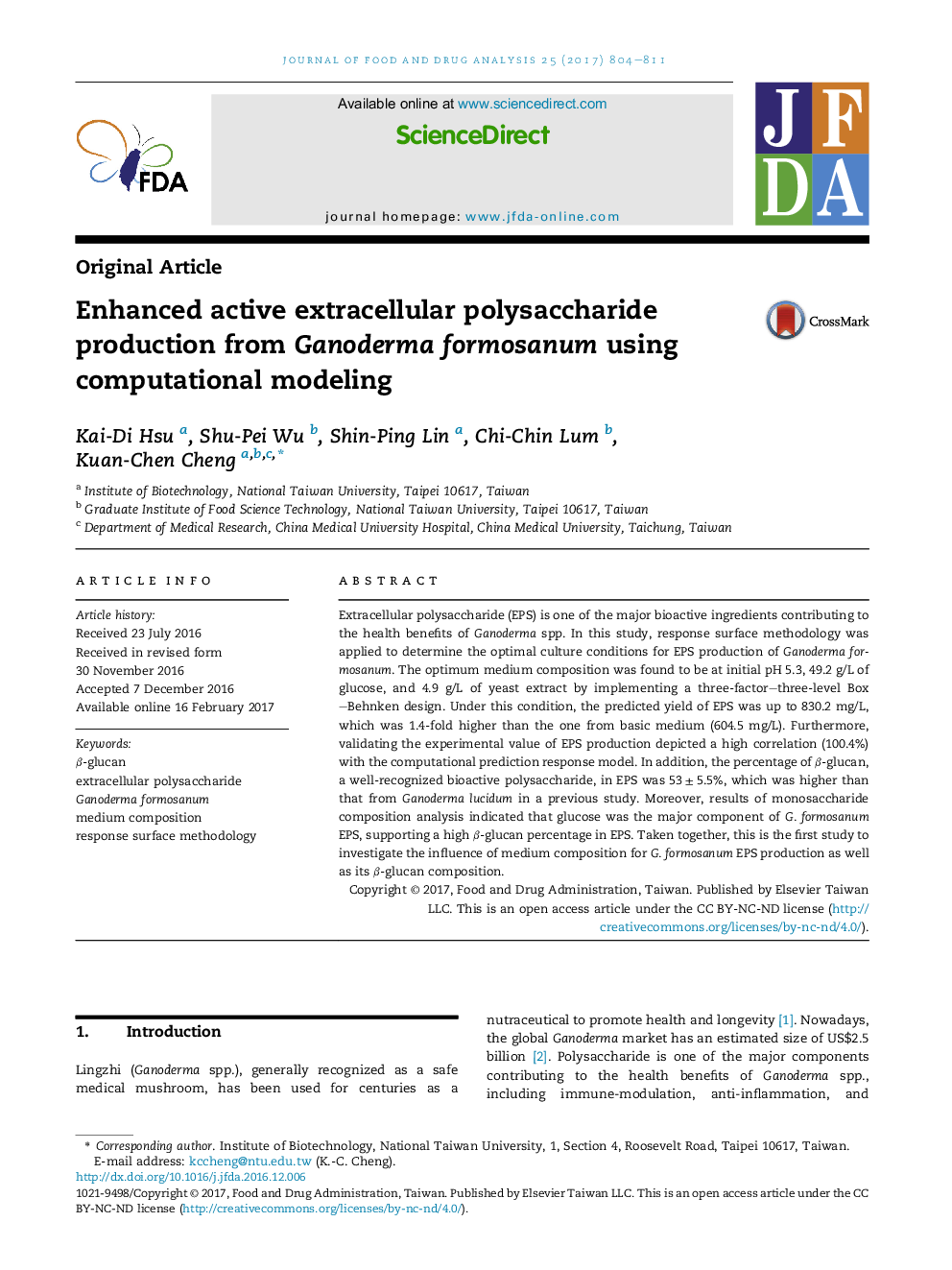| Article ID | Journal | Published Year | Pages | File Type |
|---|---|---|---|---|
| 5550993 | Journal of Food and Drug Analysis | 2017 | 8 Pages |
â¢First study to optimize culture conditions for EPS production by Ganoderma formosanum.â¢Low initial pH (3.5) leads to larger pellet size of mycelium and lower EPS production.â¢Final EPS production is 833.9 mg/L, 1.4 times higher than that from basic medium.â¢The percentage of β-glucan in extracellular polysaccharide is 53.2%.
Extracellular polysaccharide (EPS) is one of the major bioactive ingredients contributing to the health benefits of Ganoderma spp. In this study, response surface methodology was applied to determine the optimal culture conditions for EPS production of Ganoderma formosanum. The optimum medium composition was found to be at initial pH 5.3, 49.2 g/L of glucose, and 4.9 g/L of yeast extract by implementing a three-factor-three-level Box-Behnken design. Under this condition, the predicted yield of EPS was up to 830.2 mg/L, which was 1.4-fold higher than the one from basic medium (604.5 mg/L). Furthermore, validating the experimental value of EPS production depicted a high correlation (100.4%) with the computational prediction response model. In addition, the percentage of β-glucan, a well-recognized bioactive polysaccharide, in EPS was 53 ± 5.5%, which was higher than that from Ganoderma lucidum in a previous study. Moreover, results of monosaccharide composition analysis indicated that glucose was the major component of G. formosanum EPS, supporting a high β-glucan percentage in EPS. Taken together, this is the first study to investigate the influence of medium composition for G. formosanum EPS production as well as its β-glucan composition.
Graphical abstractDownload high-res image (284KB)Download full-size image
